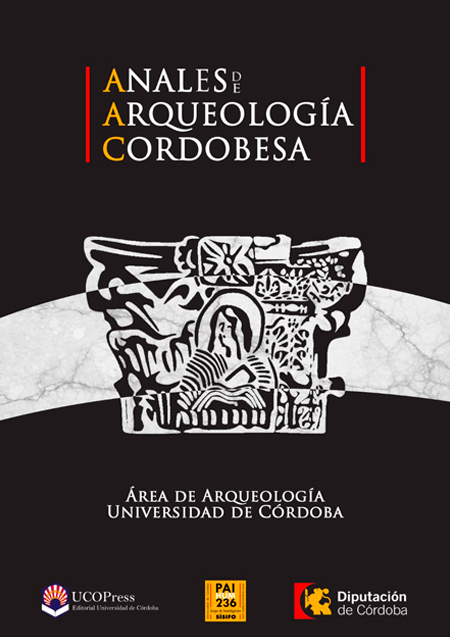The iconography of the myth of Pelope and Hippodamia in Roman Musivaria. New contributions from mosaic of Noheda
DOI:
https://doi.org/10.21071/aac.v0i27.6292Keywords:
Roman villa, mosaic, mythology, challenge, quadriga.Abstract
Until recently, it was considered that although the myth of Pelope, Oenomaus and Hippodamia was widely accepted in antiquity it did not have many representations. Apart from the scene adorning the pediment of the Temple of Zeus at Olympia, the examples of this iconography were limited to several vascular elements of art and some sarcophagi. However, there were few scenes allusive to this mythical episode in the mosaics being the most significant the mosaic conserved in the Museum of Damascus. However, the discovery of the only specimen in Noheda known so far, thanks to the full development of all episodes of this myth, has documented the iconography of each episode and the different characters who are involved, facilitating the reinterpretation of other known mosaics and the identification of a possible new copy.Downloads
Download data is not yet available.
Downloads
Published
2016-12-01
How to Cite
VALERO TÉVAR, M. A. (2016). The iconography of the myth of Pelope and Hippodamia in Roman Musivaria. New contributions from mosaic of Noheda. Anales De Arquelogía Cordobesa, (27), 125–160. https://doi.org/10.21071/aac.v0i27.6292
Issue
Section
ARTICLES
License
Aquellos autores/as que tengan publicaciones con esta revista, aceptan los términos siguientes:- Los autores/as conservarán sus derechos de autor y garantizarán a la revista el derecho de primera publicación de su obra, el cuál estará simultáneamente sujeto a la Licencia de reconocimiento de Creative Commons que permite a terceros compartir la obra siempre que se indique su autor y su primera publicación esta revista.
- Los autores/as podrán adoptar otros acuerdos de licencia no exclusiva de distribución de la versión de la obra publicada (p. ej.: depositarla en un archivo telemático institucional o publicarla en un volumen monográfico) siempre que se indique la publicación inicial en esta revista.
- Se permite y recomienda a los autores/as difundir su obra a través de Internet (p. ej.: en archivos telemáticos institucionales o en su página web) antes y durante el proceso de envío, lo cual puede producir intercambios interesantes y aumentar las citas de la obra publicada. (Véase El efecto del acceso abierto).


